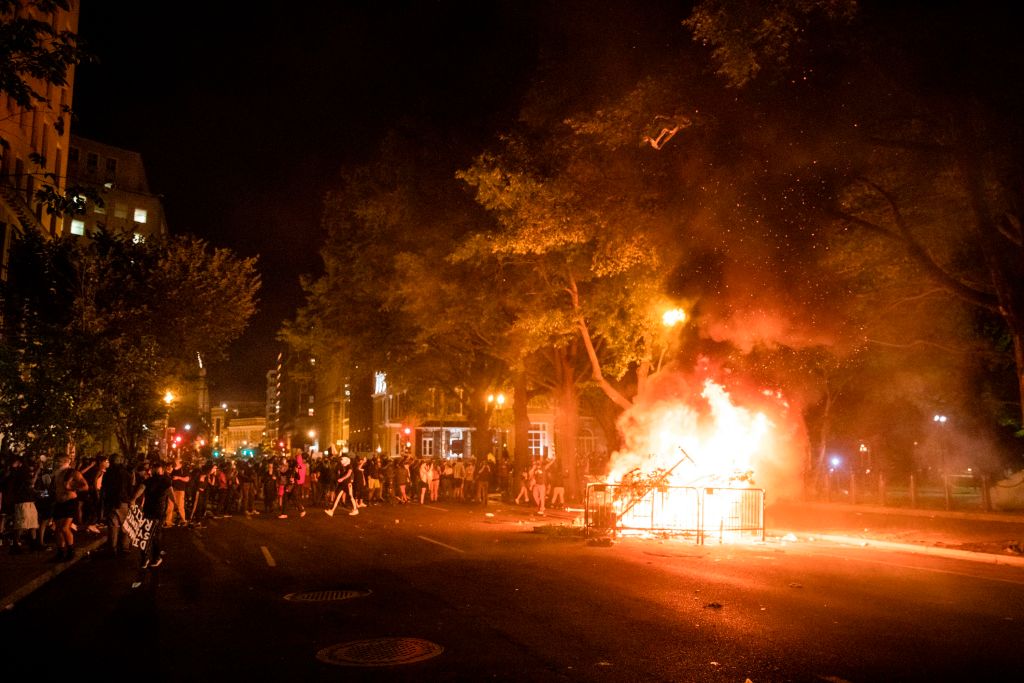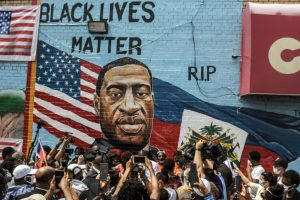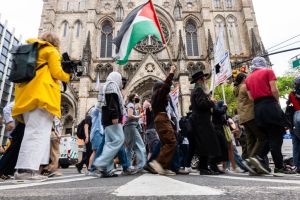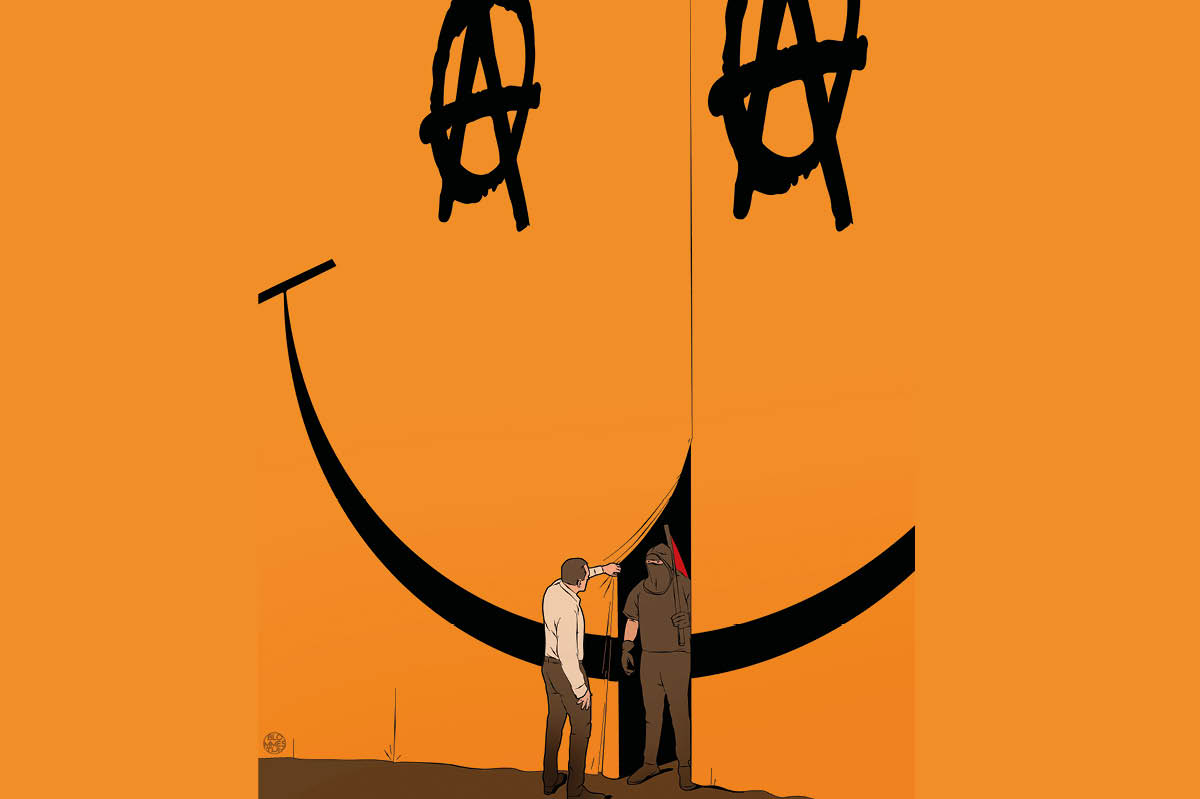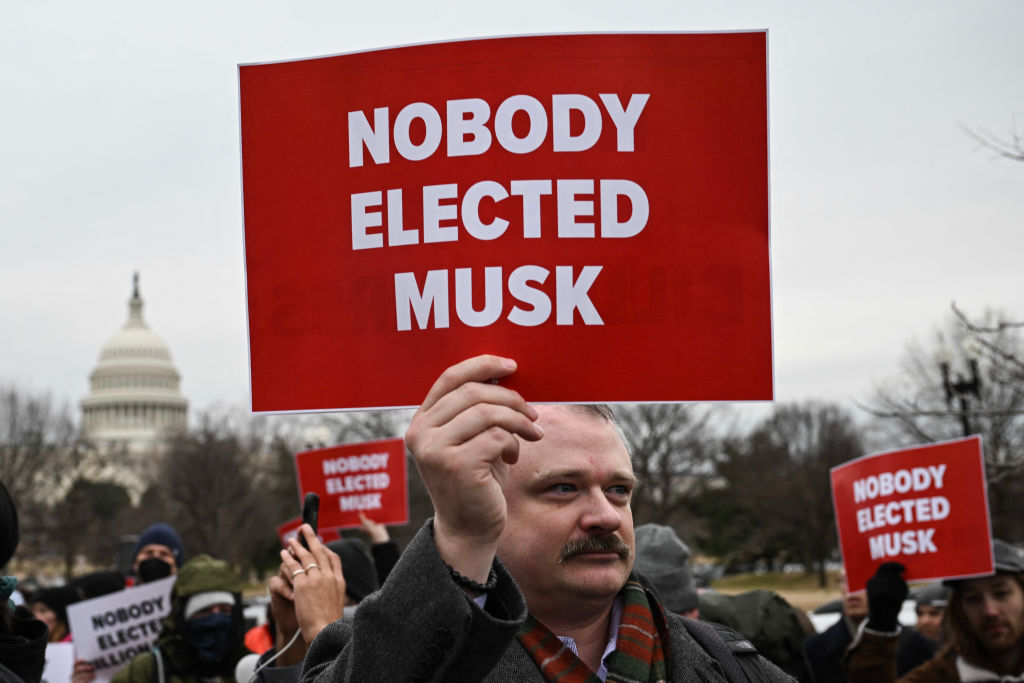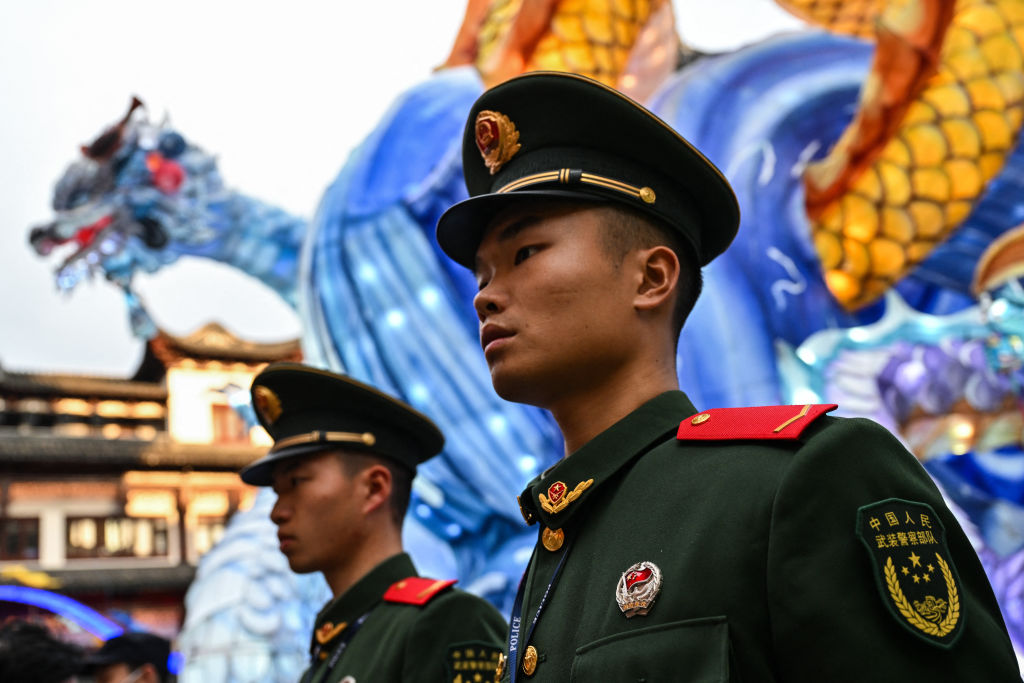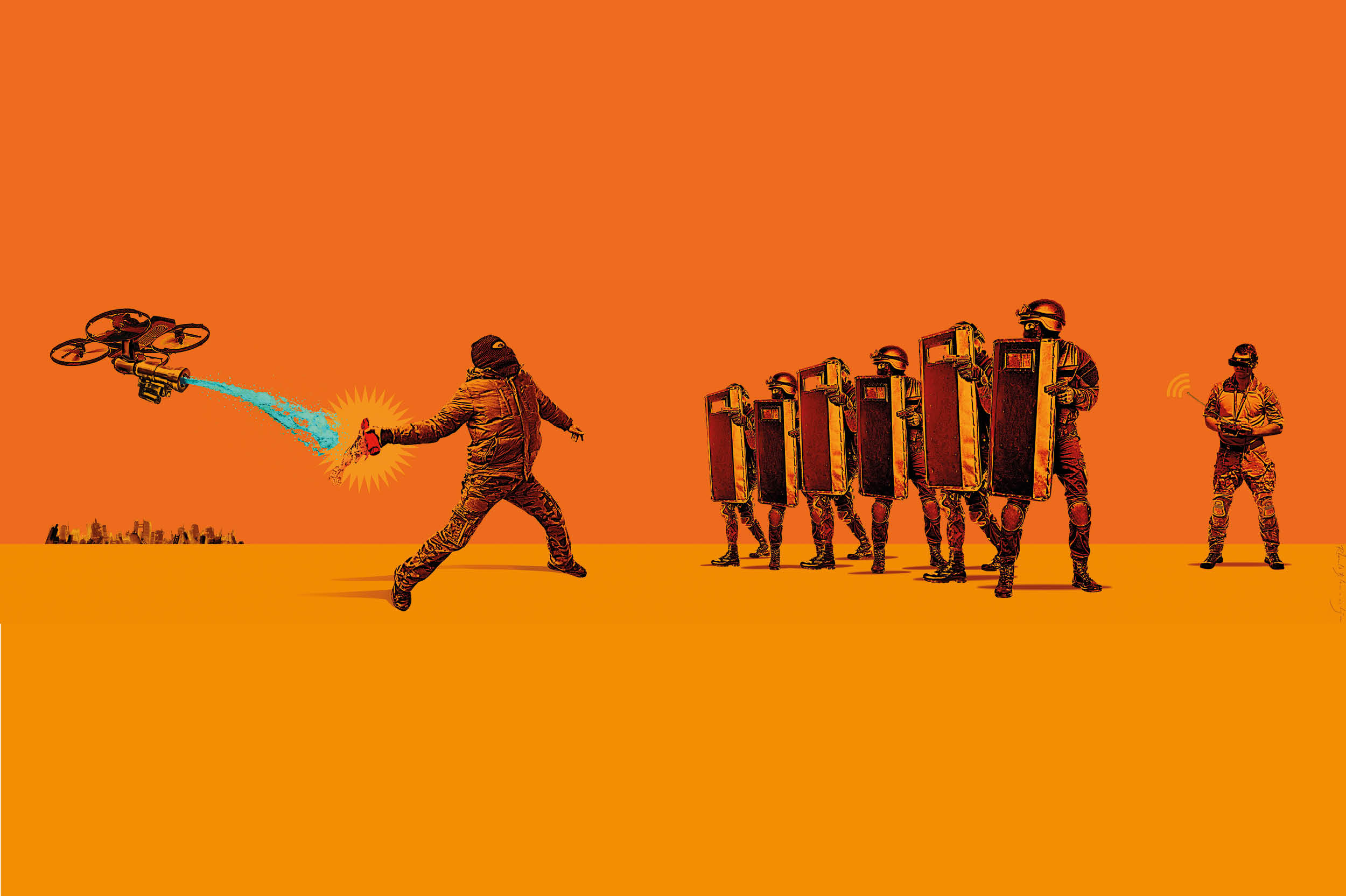I was in my hotel room in London when the second wave of riots in Ferguson broke out. The clashes began on November 24, 2014 after a grand jury decided, rightly, not to indict police officer Darren Wilson for the death of Michael Brown, a black man who, according to black eyewitnesses, was shot to death by Wilson after charging at him.
As a filmmaker who often travels to hotspots around the world to document the absurdity of the human condition, I wrestled with whether I should cut short my London trip, fly directly to the St Louis suburb and risk myself and my crew by documenting the chaos breaking out there.
Arriving in Ferguson, I witnessed heart-wrenching scenes of an American city in flames. Citizens of my beloved country openly called for its destruction and attacked the police who are charged with protecting them. I also witnessed a curious sight: dozens of young, white masked men and women were fully engaged in the destruction and urging the majority-black crowd to continue their orgy of violence.
It was my first taste of antifa.
When first Minneapolis and then other major American cities began to descend into anarchic savagery, I faced a similar decision to that night in my hotel room in Mayfair. Do I risk putting myself in harm’s way again, to document the possible beginning of the entropic disintegration of the United States?
The tableau in Minneapolis was frighteningly similar to what I had witnessed in Ferguson. Only the baseball teams have changed. Once again, the white, masked agitators of antifa are on the front lines of destruction. In Minneapolis witnessed them burning cars and stores (many of them minority-owned small businesses who were just barely surviving the pandemic). The vandals were cackling and shrieking gleefully as they brought the scene of bedlam from the Joker movie into real life. If we tried to interview or film them, they menacingly surrounded us, pointing sticks and waving bricks. Their unwillingness to be approached was abundantly clear.
Antifa is a loose collection of groups and networks, going by such names as Redneck Revolt and Torch and Black Bloc. They believe in active, aggressive opposition to what they perceive as far-right movements. With a laughable lack of self-awareness, the name antifa is a shortening of ‘antifascist’ or ‘anti-fascist action’. Ostensibly antifa are a left-wing network that fights fascists but, in their zeal and their hostility to any thought that differs from their fanaticism, they have become their purported enemy: the fascists.
Antifa seeks to destroy the democratic way of life in the United States by stimulating anarchy and guiding a descent into chaos. New rules and institutions based in communist values are supposed to rise out of the ashes. The original antifascisti were Soviet-aligned groups in Hitler’s Germany and Mussolini’s Italy. Most anti-fascists, then and now, were drawn to the anarchist side of socialist theory, rather than its state-building, authoritarian lineage: Bakunin, Kropotkin and Trotsky, rather than Engels, Lenin and Stalin. Their enemies included not just the fascists, but also the wrong kind of socialist — a division of the left that contributed to Hitler’s rise to power.
The modern anti-fascist movement began in the 1960s in Europe and as part of the generational revolt of the West in that decade. The stimulus was less the resurgence of fascism, though Nazi and fascist groups had regrouped after 1945, and more the rising generation’s growing awareness of their parents’ complicity and war guilt, and that the exigencies of the Cold War had led to incomplete reckoning, with significant Nazi functionaries rehabilitated overnight into West Germany’s bureaucracy, business and politics. As with America’s antifascists, the antifascists eventually became indistinguishable from their enemies, as in the notorious case of the Baader-Meinhof group.
Anti-fascism was associated with the punk rock scene from the late Seventies in the UK and the early Eighties in the US. I was mildly aware of the ‘anarchopunk’ presence as a teen as I dutifully body-surfed at Dead Kennedys and Suicidal Tendencies concerts in late Eighties Los Angeles. By 2018, I was undercover with an antifa group in Portland, Oregon. I secretly recorded them as they nonchalantly discussed their disdain for free speech and the need to use violence as a political tool to silence any opposition. They proudly marched through the streets of Portland waving their standard, the double-flag logo representing anarchism and communism, and harassing bystanders. The Portland police, under orders from their submissive mayor, stood down, further emboldening their marauding across the city.
Their methods are well-honed. Intimidation is a primary tactic: knives, bats, truncheons and noxious gases and substances are used against their antagonists. They enjoy flinging Molotov cocktails and projectiles including bricks, rocks, water bottles and balloons filled with urine and feces. Sometimes they exploit a perceived weakness in law enforcement in a particular area; at other times, they directly confront and attack the police. More importantly, they exploit the moral weakness of the left-leaning political class, whose members either lacks the backbone to stop them or secretly stand in quiet solidarity. And sometimes, as we have seen, not so quiet.
Aside from violence they actively engage in ‘doxxing’: exposing their enemies’ identities, addresses, jobs and other private information so that their sympathizers will harass and intimidate their enemies, possibly losing them their jobs, social standing and homes.
Free speech is inimical to the antifa way of thinking. They rightly view it as an existential threat to their movement. That is why they have also focussed on college campuses. They are expert in employing the hecklers’ veto, and have successfully intimidated administrators, professors and student leaders into shunning or disinviting conservative speakers.
Where they cannot force a school to ban speakers, they take more active measures. In 2017, they instigated several violent clashes at the University Of California at Berkeley in an attempt to silence conservative voices such as Ben Shapiro, Ann Coulter and Milo Yiannopoulos. They set fires, damaged campus property, attacked members of the crowd, threw rocks and bricks at the police and rampaged across Berkeley, breaking windows and looting stores. Similar stories have played out at universities across the country. This has been one of antifa’s great successes. Small cadres have forced weak-willed university officials to make a cost analysis before conservative speakers arrive on campus. Events that may require heavy security are canceled on grounds of cost.
Antifa has no central command, so it is impossible to know how many members and sympathizers are currently active. Different localities have antifa populations of different strengths, but antifa adherents are also willing to travel hundreds of miles to create turmoil. That said, there is significant evidence that antifa has experienced explosive growth across the country. Antifa social media groups have swelled nationwide. The Twitter account of New York City’s antifa has seen a 15-fold increase in followers since 2017. Antifa chapters are loosely connected, cellular and highly secretive — not unlike terrorist groups. They organize mostly on message boards such as Reddit and over social networks like Twitter and Facebook.
Despite antifa’s open embrace of violence and anti-democratic behavior and values, the mainstream left has responded with an alarming lack of moral outrage — and, at times, sympathy for their motives and support for their cause, if not their tactics. It is troubling that the Democratic politicians who quickly and rightly condemn white supremacy when it rears its ugly head are often silent when it comes to antifa. Make no mistake: this bizarre reticence to denounce left-wing thuggery has enabled and given comfort to these violent anarchists.
Similarly, establishment media has not taken antifa seriously or, worse, downplayed their violence or denied its involvement in the nationwide disorder that followed George Floyd’s death at the hands of a police officer. The BBC’s account of antifa was a pathetic and cartoonish whitewash of antifa’s violence. NBC published an article called ‘Antifa Violence Is Ethical? This Author Explains Why’. The explainer was Mark Bray, a history professor at Dartmouth College. Chris Cuomo, CNN prime-time anchor and brother of New York State’s governor Andrew Cuomo, lectured his audience thus: ‘I argue to you tonight all punches are not equal, morally…but fighting hate is right… And in a clash between hate and those who oppose it, those who oppose it are on the side of right.’
[special_offer]
Most alarmingly, a number of significant political leaders have shown outright support for antifa. Keith Ellison, the current Minnesota attorney general and recent deputy chairman of the Democratic National Committee, posted a photo on Twitter in which he was grinning while holding a copy of Antifa: The Anti-Fascist Handbook by Mark Bray, a full-throated how-to guide for the budding urban guerrilla. Perhaps this paternal example prompted his son, Minneapolis city councilman Jeremiah Ellison, to recently tweet a declaration of allegiance — ‘I hereby declare, officially, my support for ANTIFA’ — as if he was taking some perverse oath of anarchist office.
On May 31, President Trump indicated that he would designate antifa as a terrorist organization. Attorney General William Barr said the Justice Department is working on ‘apprehending and charging the violent radical agitators who have hijacked peaceful protest and are engaged in violations of federal law’.
The end of the American experiment will not come from without. It will come from within. We cannot know the day on which that might happen, but we may be certain that history will record it as one of the darkest. Antifa dream of hastening that day.



